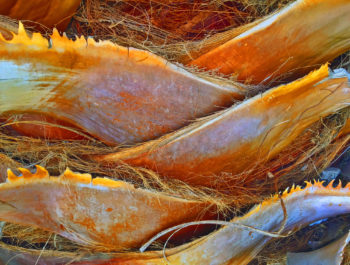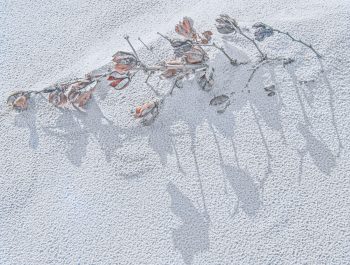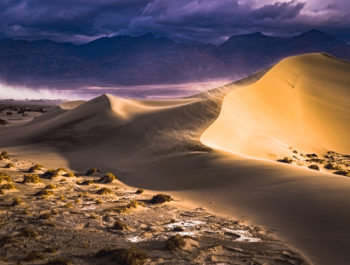Inspired By David Pye – Art Is Risk
The essential idea is that the quality of the result is continually at risk during the process of making.
David Pye
Introduction:
In the previous essay, I looked at David Pye’s concepts of workmanship of risk and workmanship of certainty. I discussed how these two concepts influence artists to either play it safe using the workmanship of certainty or take risks using the workmanship of risk. In this fourth essay, I want to look at the consequences that the workmanship of risk and the workmanship of certainty bring to the creation of art.
Art and Risk
What does it mean to use the workmanship of risk? And, by implication, what does it means to take risks when creating art? To decide to go for an unknown outcome, for an unspecified result? On the opposite, what does it mean to want certainty, to decide to go for a known outcome, for a specific result?
The outcome, the result, is defined by the choice of following one or the other of these two options. However, the way we create something new in art, just like the way we create something new in any endeavor, is to take risks. Taking risks is the gateway. It is the key that opens the door to something new, something not seen, something not experienced before.
But with risk comes uncertainty. After all, this is the nature of the dualism established by Pye. Risk negates certainty and certainty negates risk. The outcome of risk is not guaranteed. Risk can bring success, but it can also bring failure. It can bring praise but it can also bring criticism. Things can go either way, and there is no way to know which way it will go until the work is completed. When practicing art of risk, we have to go with personal convictions alone. We must believe that what we are doing is the right thing, and that it will bring success, if not in the eyes of others at least in the practitioner’s eyes, in our own eyes.
The art of certainty, on the other hand does not need such self-confidence. By choosing a successful pre-existing design, style or approach the artist guarantees success before the work is completed. The difference between the two approaches could not be more extreme. They are as opposed as day and night. As such they fit widely opposed personalities. The art of risk attracts those comfortable with the perspective of an unknown outcome. The art of certainty attracts those for whom knowledge of the outcome is primordial. Risk is not for everyone and neither is certainty.
The creative process involves exploration, surprise, and discovery. This implies that being unsure of the final outcome is part of the creative process. When creating a work of art, it is best to use the workmanship of risk because it will lead to the creation of unique pieces. Using the workmanship of certainty can only result in the duplication of previously created work. This is why the workmanship of risk is more appropriate to the creation of art than the workmanship of certainty.
Using the workmanship of risk in the process of artistic creation leads to finding new ways of creating art. New ways to paint. New ways to photograph. New ways of doing things with our chosen medium be it painting, drawing, trapeze, photography, music or other. Risk leads to innovation. It leads to the creation of new designs, of new artistic styles, and eventually of new artistic movements. In fact, risk is innovation and innovation is risk. These two terms are interchangeable. They are so inextricably linked that one cannot exist without the other.
The workmanship of certainty, the other part of Pye’s dualism, leads to sameness. Certainty is sameness and sameness is a certainty. Again, these two terms are interchangeable and one can be used for the other. Their meaning is the same because the outcome of the practice of certainty is sameness and the desire for sameness is a certainty.
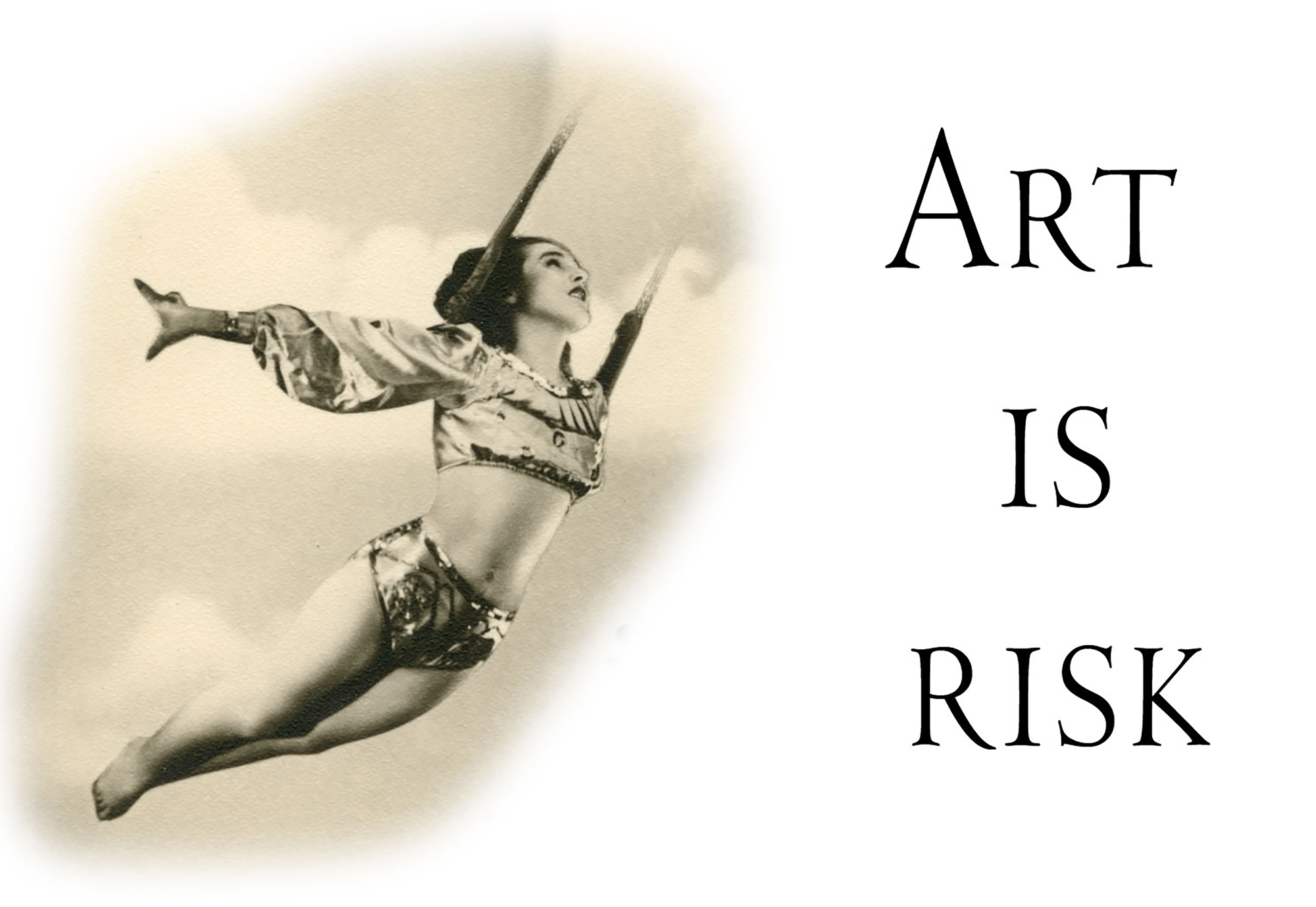
Do some artistic mediums allow different levels of risk and certainty?
If art is a risk, then an important question is whether some artistic mediums provide a higher level of risk, or a higher level of certainty, than others? Pye gives us an important clue about answering this question. For Pye the workmanship we use, either risk or certainty, is not medium-bound.
However, if we compare the level of risk presented by different mediums, it seems that certain mediums have a higher level of risk than others. Oil painting, for example, seems to present a high level of risk. We start with a blank canvas. We have to create the image from scratch. There are no composition guidelines, no lines, no numbers, no artificial intelligence to help us decide what to paint and which colors to use.
Photography seems far less risky. Photographers use a camera that creates an image without any input on the part of the artist besides looking through the viewfinder and pressing the shutter. Processing a raw file can be automated, for example by using presets, automated corrections, or artificial intelligence input in Lightroom. We can also capture photographs as jpegs instead of raw files in which case the conversion is done in the camera and we can simply print what the camera captured without having to process the image. In that situation, the camera does almost everything on its own. All we have to do is point, shoot, and print.
Painting on the other hand does nothing on its own. The artist must create the original image. The artist must also complete the image without any outside help. There is no equivalent to Lightroom automatic conversions in painting. There is no jpeg capture option either. All that is available is oil paint, and paintbrushes plus the experience, the manual control, and the inspiration of the artist.
Is this a fair comparison of the two mediums? Or, instead of comparing how risk is present in the mechanical aspects of the process, should we compare how each medium allows for the presence of artistic risk? Answering this is challenging because different mediums present different types of risk. But we are not talking about the technical risks presented by the mechanical aspects of the medium. We are talking about the artistic risks offered by each medium.
Taking a risk in art means creating something new, something never seen before. Nothing, especially not the medium itself, stops an artist from creating new, something never before seen artwork, whether it is with painting or with photography. In fact, nothing prevents an artist from creating never before seen artwork with any medium, be it drawing, sketching, trapeze, acting, music or other. Artistic decisions are controlled by the artist, not by the medium. Obviously, any subject matter is accessible via any medium because it is a matter of artistic choice, not of medium capabilities. The artistic treatment, the facture, with which the work of art is created, is an artistic choice. A photographer can therefore create never before seen photographs just as well as a painter can paint never before seen paintings or an artist sketch never before seen sketches. For example, a photographer can use a color palette that goes against mainstream taste, or departs from the tenets of previous art movements, just as well as a painter or a sketching artist can. In fact, it is clear that if the technical aspects are put aside, there is nothing that prevents a photographer from creating images that are as new, as daring, as out of the norm, or as revolutionary as a painter or any other artist.
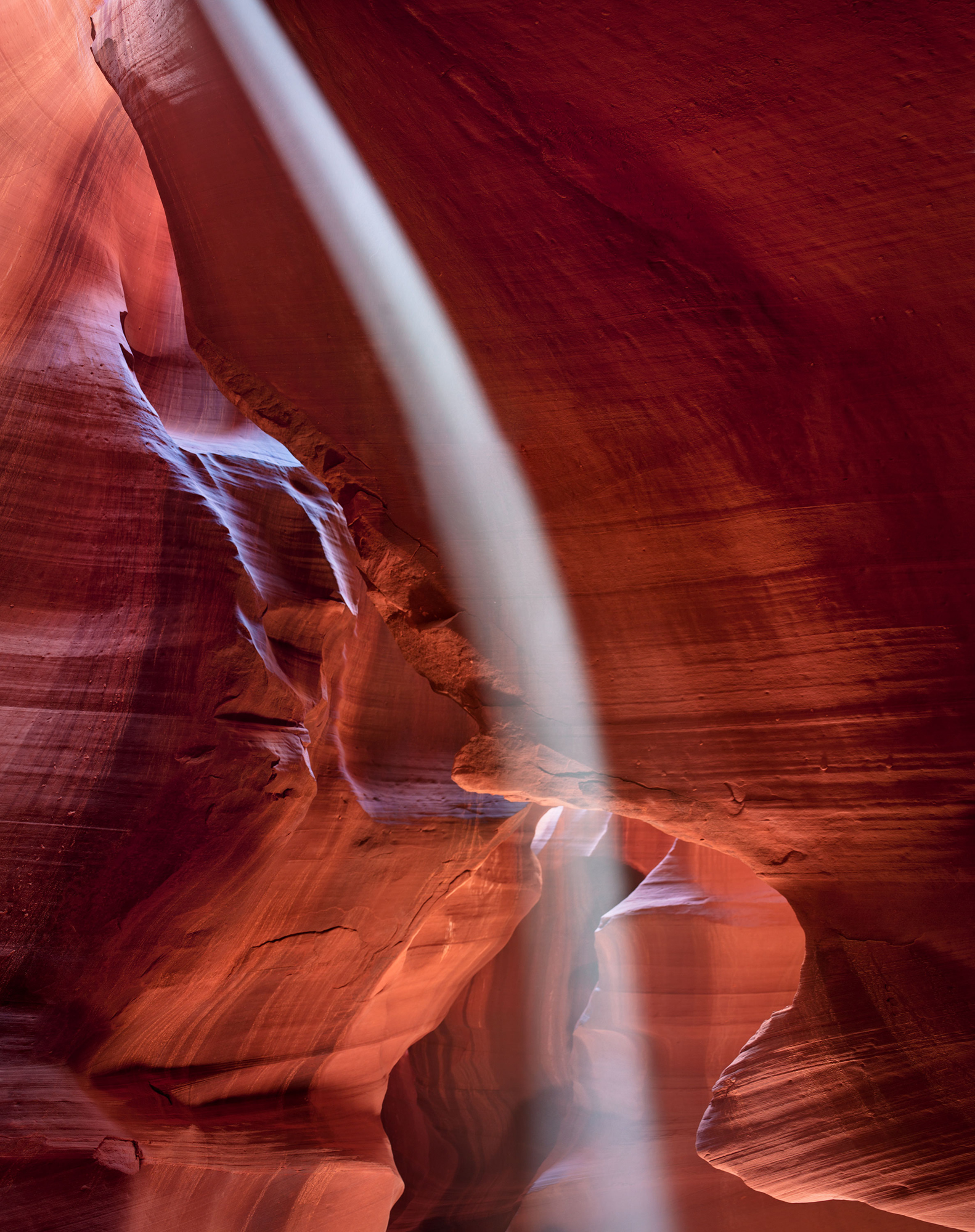
Manipulating photographs to show something that does not exist in the physical world entails taking the risk of being criticized because some audiences believe that photographs must depict reality.
Where is the risk in photography?
Pye is correct in asserting that the tools we use are unrelated to the artistic risks we take. As we saw, this is true for any medium. Using a camera and film potentially carries as much artistic risk as using a brush and oil paint. Still, a question remains to be answered, and that is not if a medium offers risk or not, but how much risk this medium offers. It is not about the presence of risk, but about the amount of risk. In other words, does photography offer enough opportunities for artistic risk to be considered art?
There is discrimination between art mediums. Some believe that certain mediums present more risk than others and are therefore more adequate for the creation of art. The logic of this discriminative approach is that the higher the level of risk presented by an art medium, the higher the medium’s potential for creating art. According to this logic, photography loses against painting. For those who endorse this viewpoint, the camera possesses a ‘magical’ property that eliminates risk because it has the ability to create an image no matter what. All you need to do is point and shoot and as long as the camera is operational, it will create an image.
It is true this is not the case with other artistic mediums such as painting and drawing, for example. Therefore, we can easily see where the risk is in painting. But where is the risk in photography? It is tempting to believe that picking up a camera and taking a photograph is something anyone can do, something that carries no risk whatsoever. Certainly, a camera will always take a photograph, no matter how inexperienced the photographer might be. This is not the case with woodworking, for example, because picking up a handsaw, a chisel, a plane, or another hand tool will not result in creating a piece of furniture. Woodworking requires extensive training to create worthwhile results. This is also not the case with painting because picking up a paintbrush and smearing oil paint on a canvas will not result in the creation of a fine art piece. Using a pencil, a brush, a pastel and, yes, a camera for the first time will not result in the creation of a masterful image. One has to learn and practice using pencil, brush, pastel, or camera multiple times, in a trained and controlled fashion, to have a chance at creating meaningful artwork.
Fact is the belief that taking a photograph is too easy to create art is stilted, stereotypical, and discriminative. This belief may be true if the goal is to create a generic photograph. However, it is false when the goal is to create a photograph that is better than the images most people take. The reason for this is simple. While a camera will always take a photograph, it will do this no matter who holds the camera. The camera does not discriminate. Anyone who presses the shutter button has an equal opportunity at the ‘no risk’ workmanship and image creation approach. Unfortunately, since anyone can do this there is no reward in doing it. No risk, no glory so to speak. Nothing of artistic value is achieved by pressing a button.
If risk equals reward, then there is no reward either. In order to be rewarded, one has to take a risk and that risk is to try to take a photograph that is better than the photographs most people take. In doing so one takes a risk because they can fail. The risk is the possibility of failure. It is the risk of losing the contest if one enters a photography contest, of not making the sale if one sells his work, of not getting students if one teaches, of being criticized if one seeks praise, of not getting followers, likes or ‘thumbs up’ if one posts on social media. Whatever the reward being sought the risk is not getting this reward. The risk is also knowing that one failed in his or her attempt to create an ‘above average’ photograph, a photograph that makes the claim of being masterful and intentional in its creation, an image that does not show the technical capabilities of a machine but that demonstrates the artistic skills of a person.
As we can see the argument that some mediums offer more artistic risks than others is stereotypical and skirts the main issue. Artistic achievement is the outcome of training and practice. To an audience unfamiliar with the artistic process, painters may appear to be taking more risks than photographers because painting is not an automated medium like photography. However, both trained artists and experienced collectors know that the risk is not in the medium used to create the artwork. The risk is in the decision to create entirely new work. In that regard, both painters and photographers have the freedom of creating new, never before seen work. There is nothing in the medium they use that can prevent them from doing so.
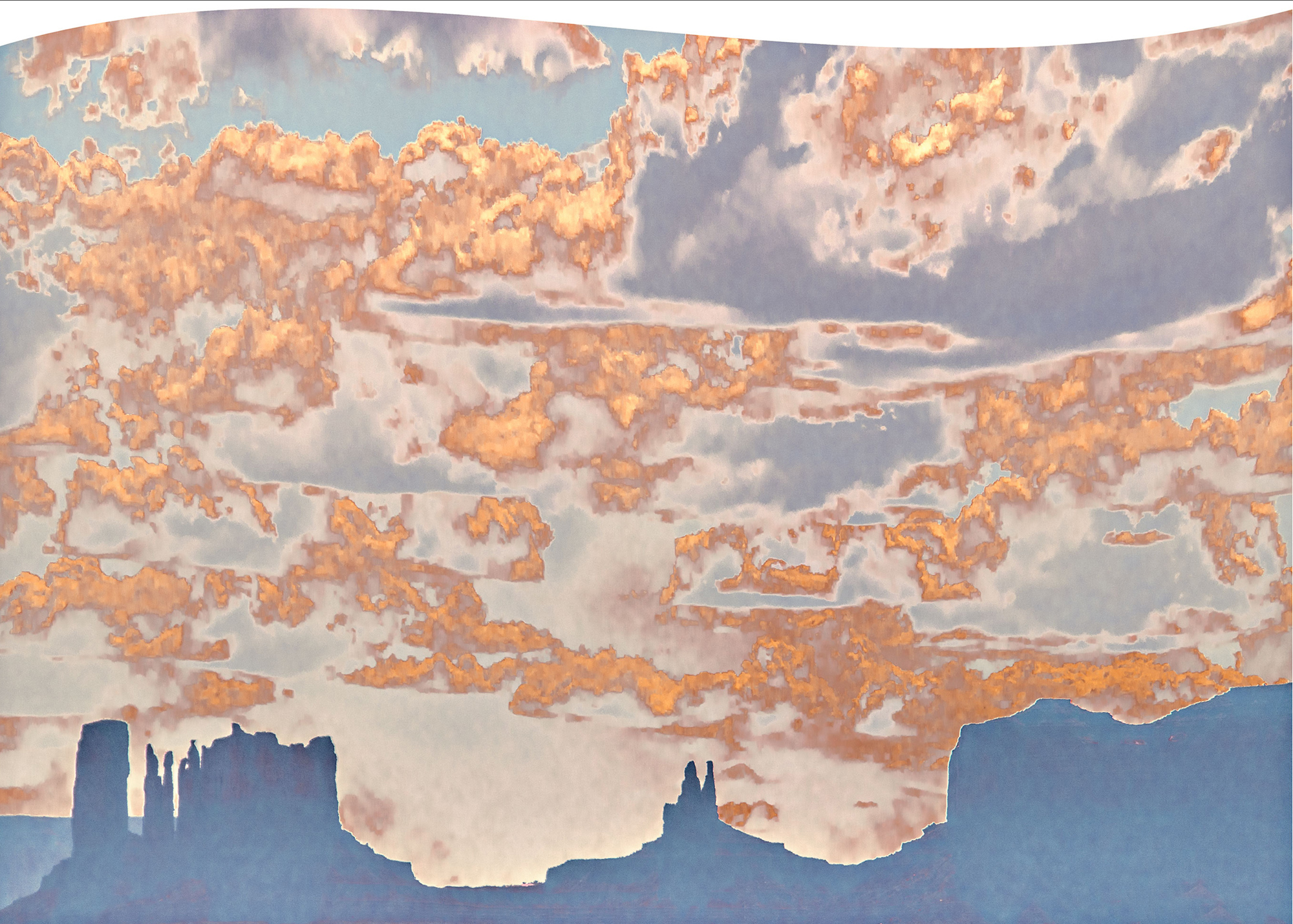
Not only does this photograph show Monument Valley in a surreal manner, it also features a non-rectangular format, departing from photographic expectations, doubling the risk of being criticized. Doing something different, something not seen before always carries the risk of not being understood or accepted.
Risk and Processing
Risk is also in the processing of the image. Processing is another way of going beyond what the machine can do by itself. Not just the camera, but also the computer and the image processing software. Here too one can simply click on ‘auto adjustment’ and get a properly processed image. However, once again, everyone can do that therefore, there is no risk and no reward in doing so. Here too reward comes from being able to do something that most people cannot do. Something which is ‘above average at the very least, or ‘masterful’ at the very most. A level of processing skills that demonstrates that a person is responsible for the final image and not just a machine.
Pye says that workmanship of risk covers a spectrum from high to low risk. At the high risk, extreme, Pye places writing and sewing as examples. There can be no jig, no tools to make handwriting or hand sewing more predictable, less prone to risk. Every word, every stitch has to be done from scratch, so to speak. In the middle risk range Pye places work done with woodworking tools such as a planer for example. While hand-operated, the planer provides control over the flattening process of a piece of wood. One is not operating freehand the way we would if we were trying to flatten a piece of wood with a chisel for example. The planer, whose purpose is to flatten a board, is a jig that gives us control over how much wood is removed in one pass. Because it has a flat sole it gives us the guarantee that the wood we plane will be flat. Pye does not talk about photography, probably because he does not see a camera as a tool. Arguably, a camera does not create a product comparable to say a piece of furniture or a bowl or a stitched garment or even a piece of writing. However, if Pye talked about photography, he would, in my estimate, place it at the extreme end of the low-risk spectrum. In other words, for Pye photography would carry almost no risk, the only possible cause of not getting a photograph being that the camera is not working or the photographer is unable to press the shutter. Other than that, cameras guarantee that a photograph will be taken, good or bad, the difference between the two being where the risk factors in.
Moonrise
The apex of risk, and thus of reward, is reached when either the image capture or the image processing cannot be repeated. The highest level of risk occurs when the resulting image either cannot be captured again or the processing cannot be repeated again. Such is the case for Ansel Adams’ Moonrise Hernandez New Mexico, arguably the world’s most famous landscape photograph. Moonrise could not be captured again because Adams had witnessed and captured a unique natural event. The combination of the clouds, the black empty sky above them, the presence of the moon rising, the snowcapped mountains, and finally the light bathing the scene and lighting the crosses in the graveyard, was simply extraordinary.
Furthermore, the processing of the negative was elusive and impossible to repeat. The photograph was created as a spur of the moment decision. Adams visualized the scene as he drove by, parked his car along the road, scrambled to get his gear together and calculate the exposure. Unfortunately, despite rushing the process as much as possible, he was only able to expose one sheet of film.
This means that processing the film was going to be a hit or miss event as there was no backup. On top of that, in his hurriedness, Adams miscalculated the exposure and underexposed the negative. This meant that shadow areas showed little detail and had to be strengthened with Selenium toning to get some separation between the dark tonalities in the image.
The process was successful but left Adams with a single negative that was challenging to print, to say the least. There was no going back to the scene because the likeliness that the scene Adams witnessed would happen again was nil. So, the only solution was to make the best of a bad situation and print the image masterfully, despite its obvious shortcomings.
Printing Moonrise was just as challenging as capturing the image and developing the negative. Over the years, Adams printed Moonrise a number of different ways. The area that saw the most changes was the sky. In Moonrise, half of the image is an empty sky. At first, Adams printed the skylight grey. In later versions, he printed the sky progressively darker and darker. Eventually, in what became the most famous version, Adams printed the sky completely black. This was a huge technical challenge. Any faux pas during the processing resulted in the black sky exhibiting greyish streaks instead of being pure black. For each perfect print he was able to create, Adams had to discard tens, if not hundreds, of ‘almost there’ prints. The risk was real, and so was the reward. Moonrise became his most successful image.
Moonrise is not only Adams’ best-known image, it is also Adams’ most valuable photograph, the one that fetches the highest prices at auction. This provides an interesting insight into the risk-reward-value relationship. A high level of risk can increase the perceived value of the work, be it expressive, as in the case of photography, or practical, as in the case of furniture.
Decisive risk
Cartier Bresson created photographs in which risk is omnipresent. For Cartier Bresson, the risk was that what he called the decisive instant, le moment decisif, was missed. The risk was that the action would unfold in a manner that did not lead to the indispensable, decisive moment. The decisive moment creates a dualism, a gap between what we expect to see and what the photograph actually shows. To achieve this Cartier Bresson had to trip the shutter at the perfect moment, when all the elements of the photograph reached the ideal moment. If the shutter was tripped too early or too late, the opportunity of capturing that moment was missed and the image that the artist strived so hard to capture was not to be.
Cartier Bresson’s photographs are about successful risk-taking. At least the ones we have access to, the ones that were published. There must be countless other photographs that failed to capture the elusive decisive moment that was never printed or if printed were never exhibited or published. This is inevitable. The process of taking risks, of creating art, means that mistakes, or unsuccessful art, will be produced. This is particularly expectable in photography because of the mechanical aspect of the process. Unlike painting, where making a painting takes hours or days, photographs are created in an instant. Therefore, multiple images will be made in the amount of time required to create a painting. This means the number of failed pieces is much greater in photography than it is in painting. However, this is only looking at numbers. In terms of time, it may be that in any given span of time, say a week, a month, or a year, both painters and photographers average the same percentage of successes and failures.
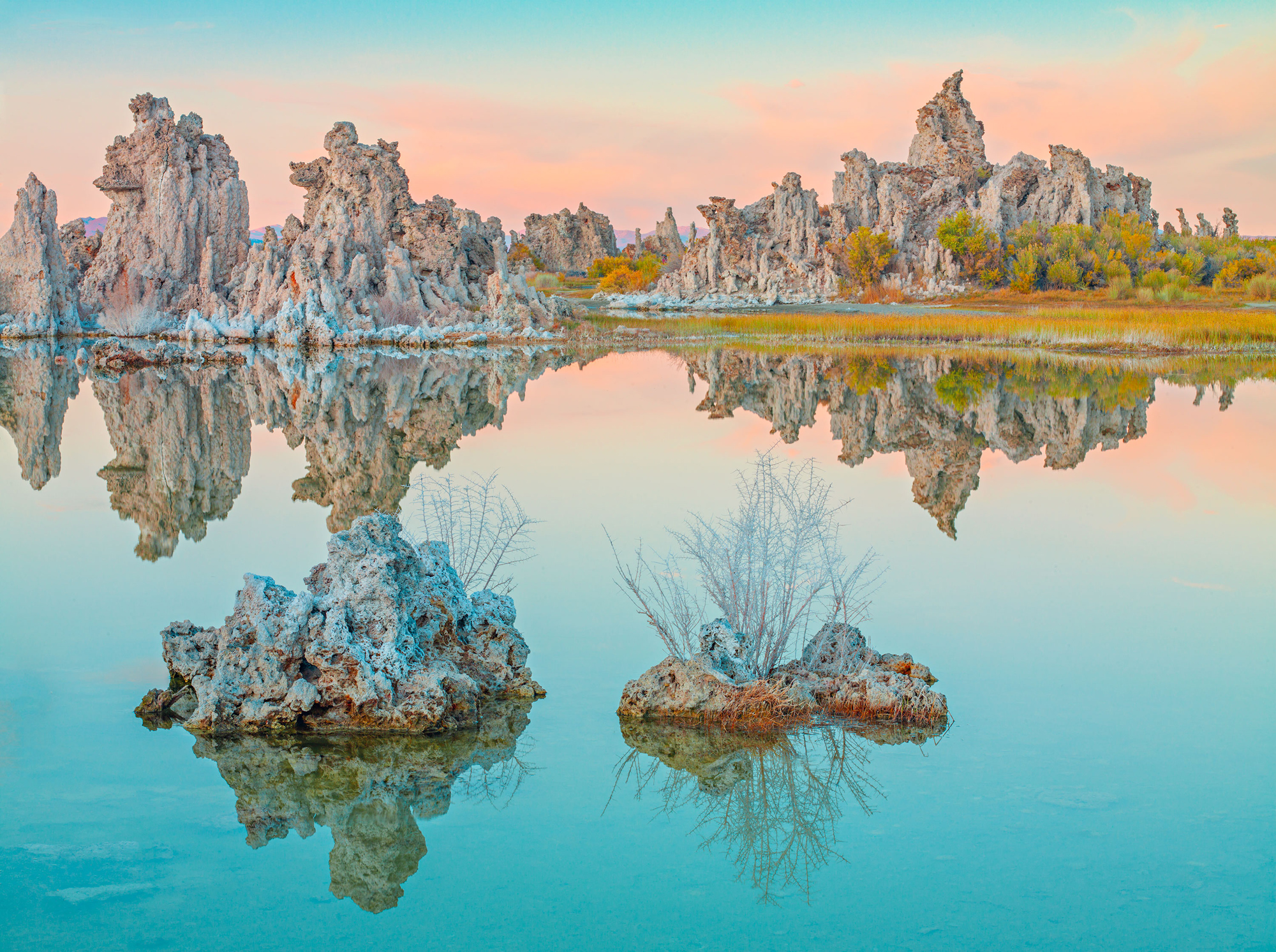
Changing the color of an image is taking a risk, the risk of not finding the proper color, of transforming nature into something else, or simply of being perceived as weird.
Risk and fear
Risk carries the connotation of fear (or risk brings fear or risk generates fear): fear of failure, fear of trying something new, fear of being criticized for changing our style or having a style that challenges accepted norms. Fear takes many aspects: it can be fear of not being able to complete the job, or fear of losing money by engaging in creative ventures that lead nowhere, or fear of not receiving support from others.
Yet risk also carries rewards. The reward that comes with creating something new, of reaching the next step with our work, of creating work that is uniquely ours, of developing a personal style, of completing a project unlike any other project. It is focusing on the rewards that get us motivated to take risks, to try something new, to take a chance. Focusing on fears will only result in discouraging us from taking a chance or starting a new venture.
When doing something manually, personal uncertainty is at play creating risk in the form of anxiety about the outcome of the process or of a specific piece. Even an experienced manual worker cannot guarantee the outcome 100% until the work is complete. A factory using mechanical processes can guarantee the outcome because machines are not affected by mood, health issues, tiredness, emotions, or other factors that influence and create variations in hand-produced items.
Conclusion
Art and risk are as inseparable as the fingers of one’s hand. To make art is to take risks, and to take risks is to make art. Because risk is an essential aspect of art, the outcome cannot be certain. The creative process must allow for uncertainty in one form or another. Uncertainty is as much a part of art as risk. Risk and uncertainty are the Siamese cats of art.
Mastery of risk is mastery of art. To become a masterful artist, one must learn to master risk. A mistake that beginnings artists often make is trying to avoid risk. They want to create work whose outcome is certain. They want to avoid making mistakes. The outcome is work that is commonplace and that plays it safe.
True art surprises us by its daringness to take risks. False art bores us by refusing to take risks. Art is created by accepting risk, not by refusing risks. The creative process involves exploration, surprise, and discovery and this implies that being unsure of the final outcome is part of this process. Embrace risk and you will create art.
Can certainty and art cohabitate? Or, to put it differently, can there be such a thing as artistic certainty? I don’t think so. In fact, artistic certainty for me is an oxymoron. How would you define artistic certainty anyway? As being ‘the experience of knowing that the work of art you are in the process of creating is bound to be an artistic success?’ How can there be such a thing? Art is the outcome of the workmanship of risk, not of the workmanship of certainty. Nothing is certain in art except uncertainty. There can be no predictions of outcome because a work of art in progress navigates between success and failure every step of the way. As Pye puts it, in the workmanship of risk the work is at risk every step of the way. Art contains and features risk. Art is risk.
What’s Next
Pye’s concept of workmanship of risk opens the door to a reflection on art. It provides insights upon both the appreciation of art and the creation of art, bringing a deeper understanding of the artistic process. In the next essay, number 5 in this series, I will continue this reflection by looking at Pye’s concept of variety.
About Alain Briot
I create fine art photographs, teach workshops with my wife Natalie, and offer Mastery Tutorials on composition, image conversion, optimization, printing, business, and marketing. I am the author of Mastering Landscape Photography, Mastering Photographic Composition, Creativity and Personal Style, Marketing Fine Art Photography and How Photographs are Sold. My books are available in eBook format on my website. Free samples are available so you can see the contents of these books for yourself.
You can find more information about my workshops, photographs, writings, and tutorials as well as subscribe to my Free Monthly Newsletter on my website. You will receive 40 free eBooks when you subscribe.
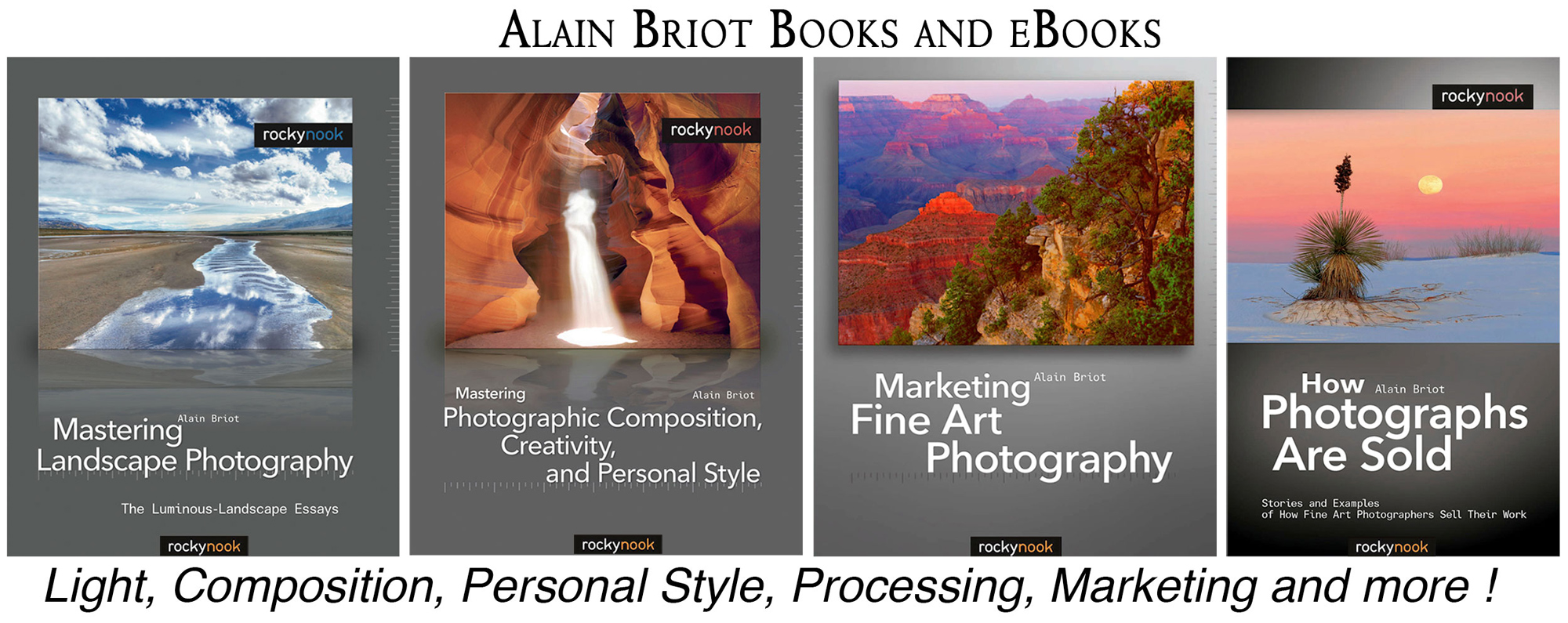
Studying fine art photography with Alain and Natalie Briot
If you enjoyed this essay, you will enjoy attending a workshop with us. I lead workshops with my wife Natalie to the most photogenic locations in the US Southwest. Our workshops focus on the artistic aspects of photography. While we do teach technique, we do so for the purpose of creating artistic photographs. Our goal is to help you create photographs that you will be proud of and that will be unique to you. The locations we photograph include Navajoland, Antelope Canyon, Monument Valley, Zion, the Grand Canyon and many others. Our workshops listing is available HERE.
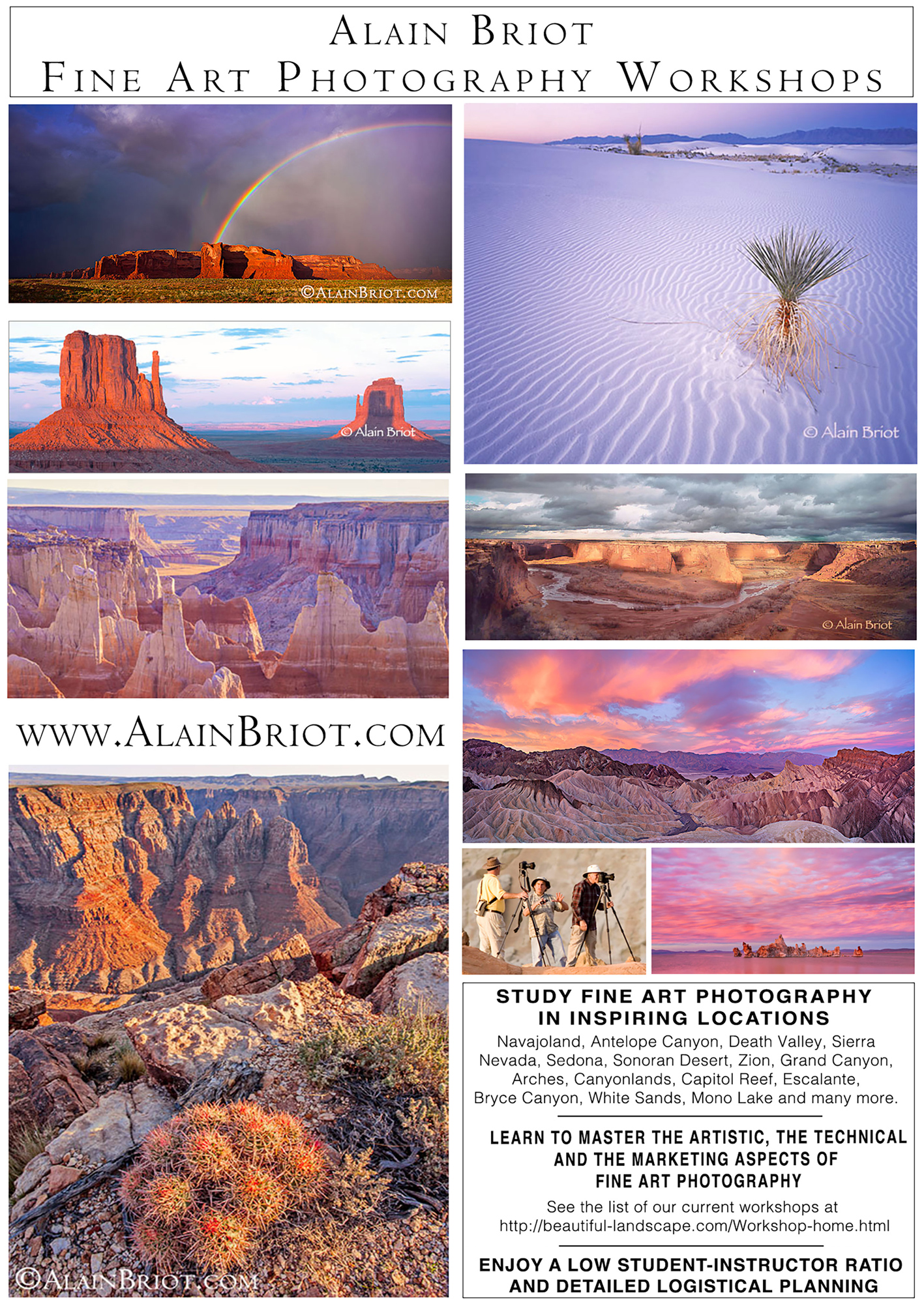
Alain Briot
April 2022
Glendale, Arizona
Author of Mastering Landscape Photography,Mastering Composition, Creativity and Personal Style, Marketing Fine Art Photography, and How Photographs are Sold. http://www.beautiful-landscape.com [email protected]




